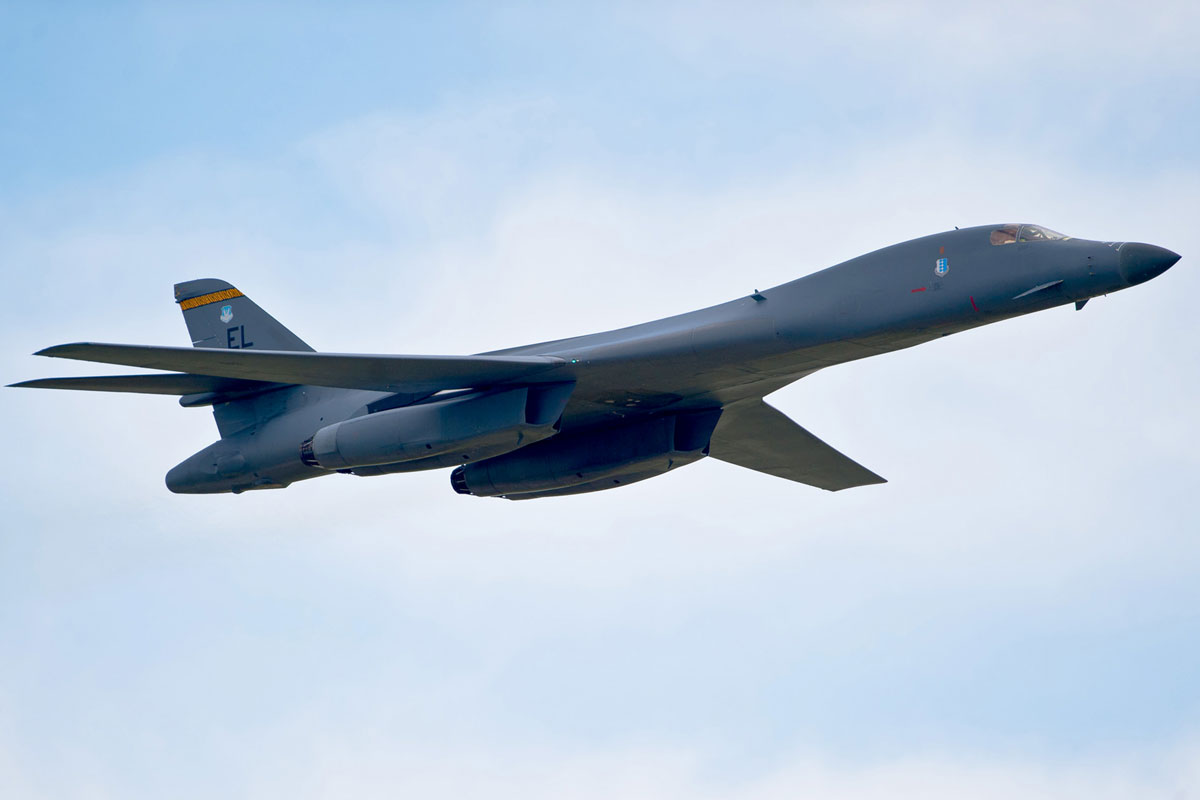B-1B Lancer

The B-1B is a multi-role, long-range bomber, capable of flying intercontinental missions without refueling, then penetrating present and predicted sophisticated enemy defenses. It can perform a variety of missions, including that of a conventional weapons carrier for theater operations.
The first B-1B was delivered to the Air Force at Dyess Air Force Base, Texas, in June 1985, with initial operational capability on Oct. 1, 1986. The final B-1B was delivered May 2, 1988.
General Characteristics
| Primary Function: | Long-range, multi-role, heavy bomber |
|---|---|
| Power Plant: | Four General Electric F-101-GE-102 turbofan engine with afterburner |
| Thrust: | 30,000-plus pounds with afterburner, per engine |
| Length: | 146 feet (44.5 meters) |
| Height: | 34 feet (10.4 meters) |
| Wingspan: | 137 feet (41.8 meters) extended forward, 79 feet (24.1 meters) swept aft |
| Speed: | 900-plus mph (Mach 1.2 at sea level) |
| Ceiling: | Over 30,000 feet (9,000 meters) |
| Weight: | Empty, approximately 190,000 pounds (86,183 kilograms) |
| Maximum Takeoff Weight: | 477,000 pounds (214,650 kilograms) |
| Range: | Intercontinental, unrefueled |
| Armament: | Up to 84 Mark 82 conventional 500-pound bombs and 30 CBU-87/89/97. Also can be reconfigured to carry a wide range of nuclear weapons |
| Crew: | Four (aircraft commander, pilot, offensive systems officer and defensive systems officer) |
| Unit Cost: | $200-plus million |
| Date Deployed: | June 1985 |
| Inventory: | Active force, 50 (PAA) 84 (actual); ANG, 10 PAA (11 actual); Reserve , 0 |